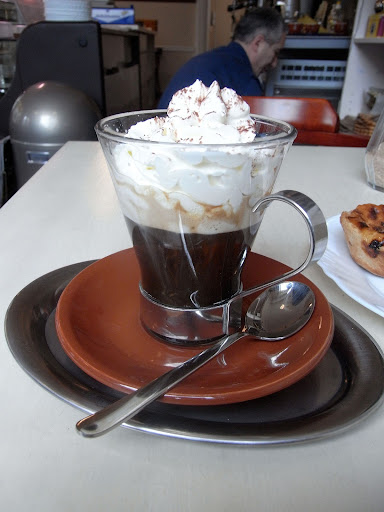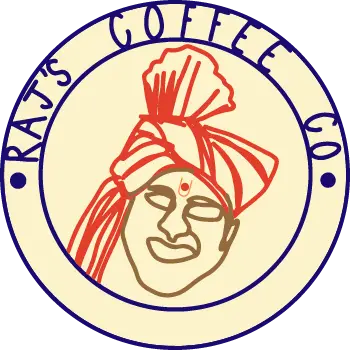
Throughout this article, we’re going to cover a number of different elements of the history of cappuccino and share some information that we genuinely find fascinating. Now, get yourself a steaming mug of coffee, put your feet up, and join us on this journey of learning.
What is a cappuccino?
A cappuccino is, of course, a type of coffee drink. In the modern sense that we’re likely all most familiar with, a cappuccino is comprised of three distinct layers.
The first layer is an espresso, either single or double, that serves as the primary flavor of the coffee. It isn’t the majority of the drink by volume, but it serves to bring some weight to your sips.
This espresso is topped with steamed milk. When steamed properly, this milk is a thick, rich, and foamy experience, with microbubbles serving to provide an utterly unique texture to your drink.
The final level is thick, frothy milk. This is typically generated at the same time, in the same pitcher, as the steamed milk. Due to the density of bubbles and firmness of the foam, it rises to the top of the pitcher, and, when poured into a mug, settles on the top of the cappuccino.

This triple-layer drink forms the basis of a cappuccino. Some cafes suggest that it should be topped with a generous sprinkling of chocolate powder, while others suggest a different powder or nothing at all. That decision is typically down to personal choice, though we love it!
Let’s break down cappuccino history
The first cappuccinos in the world originated in Italy, as a great number of different coffee drinks did. It didn’t spring up out of nothing, of course, but rather was the product of the slow evolution of different coffee drinks over time.
‘Cappuccino’ origin lies in Northern Italy as recently as the 1930s! During that time, it was quite different from what you and I would recognize as a cappuccino: coffee would be steeped and brewed with cream, spices, and sugar. This mixture would be strained to remove any solids and served as a cappuccino. Sometimes, whipped cream would top these drinks.
This early version of the cappuccino was more of a dessert drink than its modern counterpart, which developed in the 1950s. During that time, people began making cappuccinos with espresso instead of brewing in a cafetiere-style way. This meant that the volume of liquid in this drink was lessened, so steamed milk was added to bring the drink to the size customers had come to expect.
How has cappuccino history changed over time?
Cappuccino history certainly involves a number of twists and turns – the beverage has seen some evolution over time!
Before there was the cappuccino that can be found in coffee shops today, there were a range of different types of coffee that eventually resulted in the style we enjoy in the modern day.
The first cups of coffee in history would have been produced by boiling water and coffee together, and drinking the resulting beverage, grounds included. This was known, back in the day, as the Ottoman style of making coffee.
The Ottoman preparation fell out of favor a little over time, with the British popularizing and spreading the technique of steeping and filtering coffee with tools that we would recognize as very early versions of french presses. These pieces of equipment were a little more like a teapot, though with a finer mesh to catch grounds than was used to catch tea leaves.
From that steeping method came the addition of milk, to taste. The word cappuccino has its origins in Viennese coffee houses in the 1700s. At that time, the word ‘Kapuziner’ (pronounced cap-oo-zee-ner) would be a steeped coffee drink, combined with cream, spices, and sugar. This could then be topped with whipped cream to create a drink a little more similar to the cappuccino format that a modern person would recognize.
This Viennese coffee was known as Viennese coffee around the world, though the name cappuccino likely did originate as an altered version of the word ‘kapuziner’. This name was combined with the name of Capuchin monks, in Italy. These monks have brown robes from the neck down, and white habits. This is visually similar to a cappuccino – white on top, with brown underneath.
After the name ‘cappuccino’ caught on in the 1930s, the first version to be made under that name was in the Viennese style. It would be topped with cinnamon or chocolate, typically. Then, in the 1950s, steamed milk was used to create a similarly textured drink from espressos, rather than using steeped coffee. Below, see a photo of a kapuziner coffee, which is still sold around the world today, though mostly in Austria.

Are there regional variations?
There are some variations in cappuccinos made around the world. While they’re not regional in the same way that pasta is regional in Italy, they’re still interesting to speak about.
Chiaro
This is a light, or wet cappuccino. This is essentially a way of having more steamed milk and less frothed milk in a cappuccino, which results in a drink that’s a little more like a latte.
Scuro
This is a dark, or dry cappuccino. It is the opposite of a wet cappuccino since there is typically more froth and less steamed milk. People enjoy this option as the bubbles pop more slowly, giving you a drink that changes a little over time.
Freddo
Cappuccino Freddo is a cold version of a typical cappuccino. It’s typically quite popular in Greece and some parts of Italy during the hotter parts of the year.
Similar to the Freddo is the iced cappuccino, which is only truly popular in Canada, where the chain Tim Hortons sells them fairly regularly. They are mostly comprised of coffee syrup, blended ice, and some form of dairy, depending on what the customer wants.
Conclusion
The cappuccino has gone through a long, complex evolution to get to the point it stands at today. We’re really excited to see where it might go next – happy sipping!

